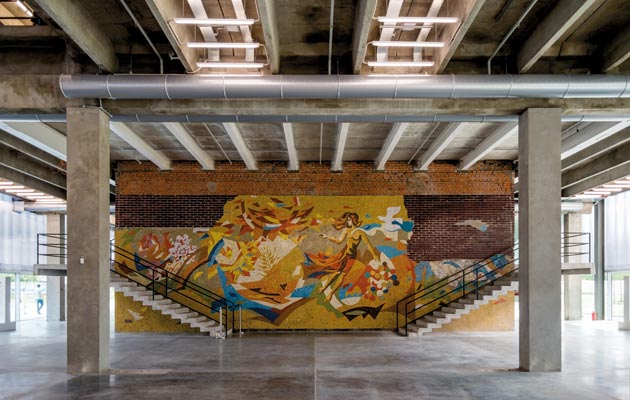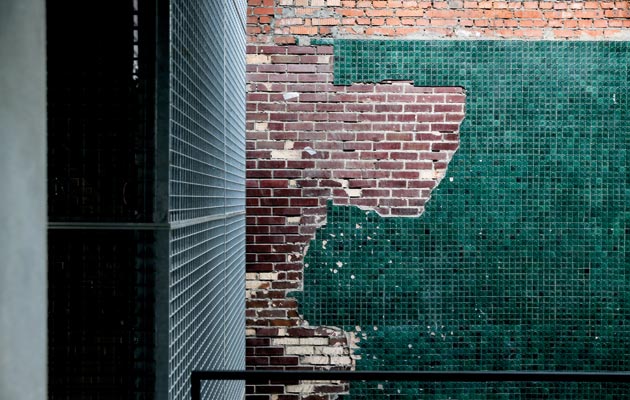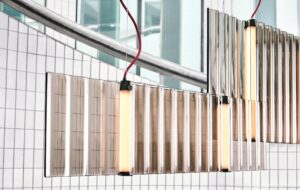 |
||
| Rem Koolhaas mixes preservation and provocation in Moscow, turning a Soviet-era workers’ canteen into a contemporary art space, says Edwin Heathcote
Rem Koolhaas is utterly adept at wrong-footing the world. His modus operandi is to establish an argument with such wit and intelligence that everyone is convinced, wait for the world to catch up, and then pronounce that its opposite is true. He did it first with cities. He wrote the texts which defined how cities, not buildings, were the true engines of culture, machines that generated conditions in unpredictable ways. He eulogised New York’s crass commercialism and the typologies that emerged not from architectural theory but from economic conditions. Then, when everyone had caught up, he proclaimed that the real future of the city lay in Lagos and Beijing. When the world turned their eyes definitively towards Asia and Africa, Rem’s gaze settled on the Gulf – once dismissed as a hopeless, kitsch vitrine of bad taste, this, apparently, was where the action was. And when, finally, the whole world was organising conferences on cities, Rem proclaimed that the real future was the countryside. He wrote that the radically changing rural conditions, with migrant labour, the changing status of housing as a holiday luxury and the automation of agriculture were the zenith of modernity. Boom. That was the sound of OMA breaking the sound barrier, overtaking, then roaring back in the other direction. In 2010, OMA curated a pavilion at the Venice Biennale. Cronochaos was an exploration of the phenomenon of preservation and a warning that the time was imminent when all rural landscapes and all city centres would become protected cultural artefacts, closed to change, abandoned to tourism. Implicit in the critique was also the idea of listing the landmarks of modernity: the idea that the world’s starchitects were particularly vulnerable to having their own works listed as they were being built – instant heritage. Boom. It was a brilliant turnaround, conservation seen as the ultimate outcome of modernity, a parallel modernism emerging in the 19th century just as engineering technology led to proto-functionalism. And now, for dessert, Rem is doing preservation. Boom. And what a boom it is. Two major cultural buildings from OMA opened this year almost simultaneously, Milan’s Fondazione Prada and Moscow’s Garage Museum of Contemporary Art. The former reinhabits a century-old distillery on the industrial edge of MiIan, the latter repurposes a huge canteen in Moscow’s Gorky Park, one-time workers’ paradise and testing ground for Soviet modernity. Together, they encompass the histories of manufacture and consumption, capitalism and communism, decay and luxury. The Fondazione Prada, with its gold-plated tower, whimsical Wes Anderson-designed cafe and oddly luxurious foamed-aluminium surfaces, is striking and refined. The Garage is something rather different. |
Words
Edwin Heathcote
Above: The concrete structure has been clad in translucent polycarbonate
Image: Yuri Palmin / © Garage Museum of Contemporary Art |
|
|
||

A mosaic mural depicting Autumn has been meticulously restored |
||
| The institution, founded and funded by Dasha Zhukova, started off in a Konstantin Melnikov-designed bus garage (hence its name) and has ended up, coincidentally, in the Konstantin Melnikov-designed Gorky Park. Once a kind of massive proletarian canteen (a breathtaking 1,500 covers when it was built in 1968), it was named The Seasons. There is a personal connection here: Koolhaas claims he was converted to the profession by the wonders of Soviet architecture – predominantly the visionary constructivism of Leonidov, Melnikov and the others – but he was also impressed by the generosity and pubic spiritedness of buildings such as the canteen. He duly switched from journalism to architecture – although, perhaps, never quite entirely.
The building is effectively a big industrial shed. For years it was a dark, graffiti-clad junkie den. What little remains of its original decor has been conserved – a mosaic mural representing a floating figure of Autumn has been meticulously restored like a Roman floor, while dark green op-art relief tiles and orange floors have been left in place. Otherwise, the building has been stripped back to the bare concrete and clad in translucent polycarbonate to create a cheap/expensive/careful/ad-hoc architecture that is neither icon nor post-industrial box. Instead it appears to be mostly about its huge ground floor – a lobby-cum-party space with operatic steel stairs, a typically OMA amphitheatrical slope accommodating a bookshop and play area and a plywood-encased bar. Entry is via a huge polycarbonate door that can be raised like a plastic portcullis. It’s over-theatrical. The gallery spaces upstairs, while not quite an afterthought, are over-stuffed and over-curated. Perhaps this is more about the institution cramming a bit of everything into its opening extravaganza but the spaces appear a little awkward – albeit the huge central volume works well with Rirkrit Tiravanija’s performative embrace of ping pong and free dumplings. This is a building that is not so much about its contents, but about giving Moscow a reception space for art – which the city lacks – and about the reassessment of an era in which architecture was conceived for the masses. This is a proletarian building – a workers’ canteen in a park – and Koolhaas visibly enjoys the provocation that communism produced not only much of value but an alternative, a parallel universe in which capitalism and elitism were once not the only option. The Garage revels in the contrast between mass catering and elitist art. It is an architecture of dreaming, of subtle nostalgia and about the preservation of partial memory. |
||

The canteen’s dark green tiles have also been preserved |
||

















